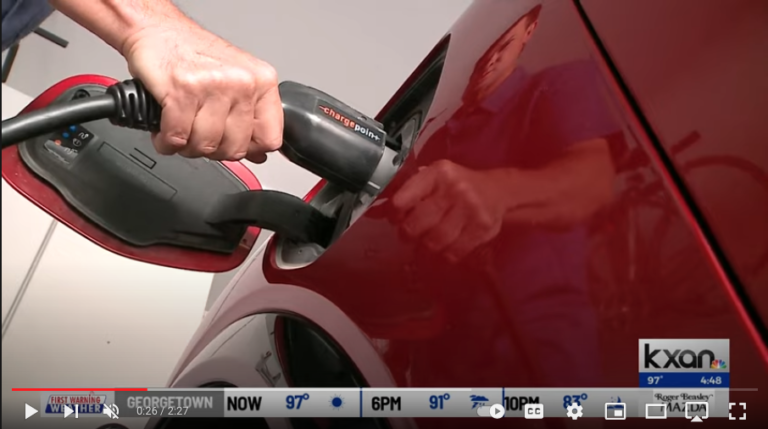February 28, 2019
Energy research center Pecan Street and utility Austin Energy have launched Texas’ first vehicle-to-grid (V2G) research and testing center, which will work on hardware and software innovations to enable V2G to go mainstream, with possible application for microgrids down the road.
V2G describes the electricity flowing to and from plug-in electric vehicles and the grid to help offset peak demand and provide greater flexibility in accessing energy resources. For example, an EV used for a daily commute can be parked and connected to a charge/discharge unit at the end of the day, with energy transferred from the EV’s battery to the grid’s distribution feeder. Later that night, the EV can recharge with wind energy or other sources when energy demand and prices are lower.
This means that V2G offers the potential of addressing two challenges that come with renewable energy resources ─ the intermittency of wind and solar and the equally important issue of curtailment, where excess renewable energy is wasted for lack of real-time demand.
Austin SHINES with solar power
The V2G initiative is a strategic part of Austin Energy’s Sustainable and Holistic Integration of Energy Storage and Solar Photovoltaics (SHINES) project, designed to help the local grid integrate more solar power. SHINES includes two utility-scale energy storage systems, multiple customer-sited energy storage systems at residential and commercial properties, smart inverters, real-time data feeds, and a distributed energy resource software platform to optimize energy use.
“The Austin SHINES Project is really focused on how we can make distributed energy resources safer, cleaner, more affordable, and more reliable,” said Cameron Freberg, utility strategist, electric vehicles & emerging technologies at the utility. “The type and quality of analysis provided by research from Pecan Street will be critical in proving the feasibility of V2G for Austin and similar energy environments.”
Real world data
Pecan Street is supporting the Austin SHINES project at the residential level. Researchers at the organization’s lab in East Austin are gathering data from a 2018 Nissan Leaf powered by a 40-kW battery pack. According to ABI Research, the biggest barrier to V2G development is the current lack of support by automotive manufacturers, an exception being Nissan, which has made a significant commitment to the technology. The Leaf is being used by Pecan Street staff members on a regular basis, including trips during rush hour to provide real world usage data.
Pecan Street has also installed an energy-monitoring network in the lab’s neighborhood, including 250 homes with solar panels, 65 of which have EVs. Data gathered from the neighborhood will complement the more granular dataset from the Leaf at the lab.
Scott Hinson, chief technology officer for Pecan Street, explained that data gathering efforts in Austin are a part of similar projects by his organization in California, Colorado, and upstate New York. Eventually, over 1,000 volunteer homes will be providing data from up to 30 circuits at one-second intervals. That will add up to over 5.5 billion data points per day, a wealth of information about residential energy use that can be combined with data collected in Austin to better understand the impact of new technologies, including V2G, on the distributed energy grid.
Leveraging V2G for residential microgrids
Hinson added that research conducted by Pecan Street on V2G systems could be leveraged to support other applications such as residential microgrids. Working in partnership with Concurrent Design, Pecan Street has developed Energy Switch, an open source device that operates as a residential microgrid-in-a-box.
“We would love to do more work on microgrids with Energy Switch,” he said, “especially as multi-port inverters that integrate DC solar, DC battery and VA power are becoming more capable and available.”
Obviously, any V2G system is a puzzle with many pieces. But with recent initiatives undertaken by players like Austin Energy and Pecan Street, a picture is now emerging of a greener future for transportation and public energy use supported in large part by V2G technology.












